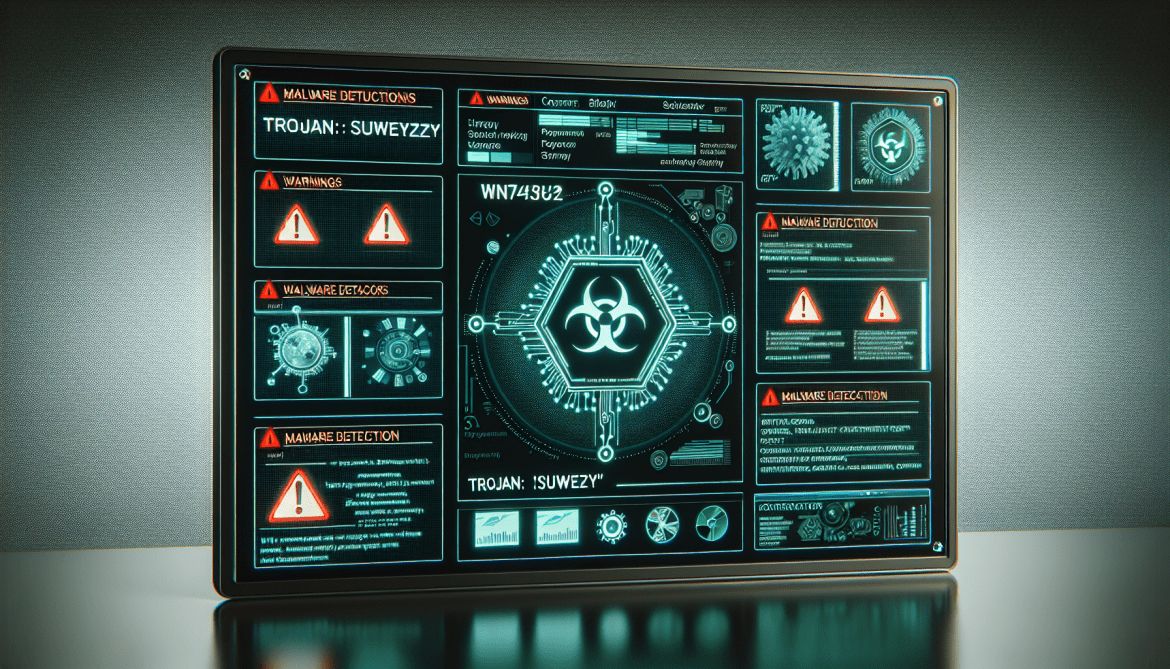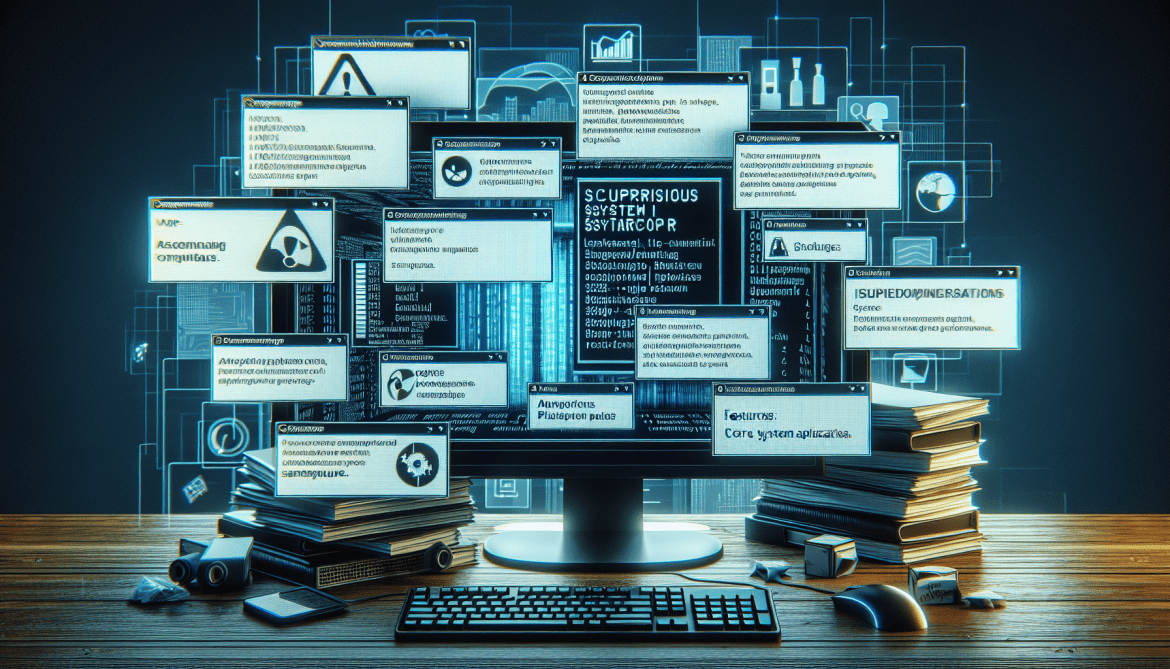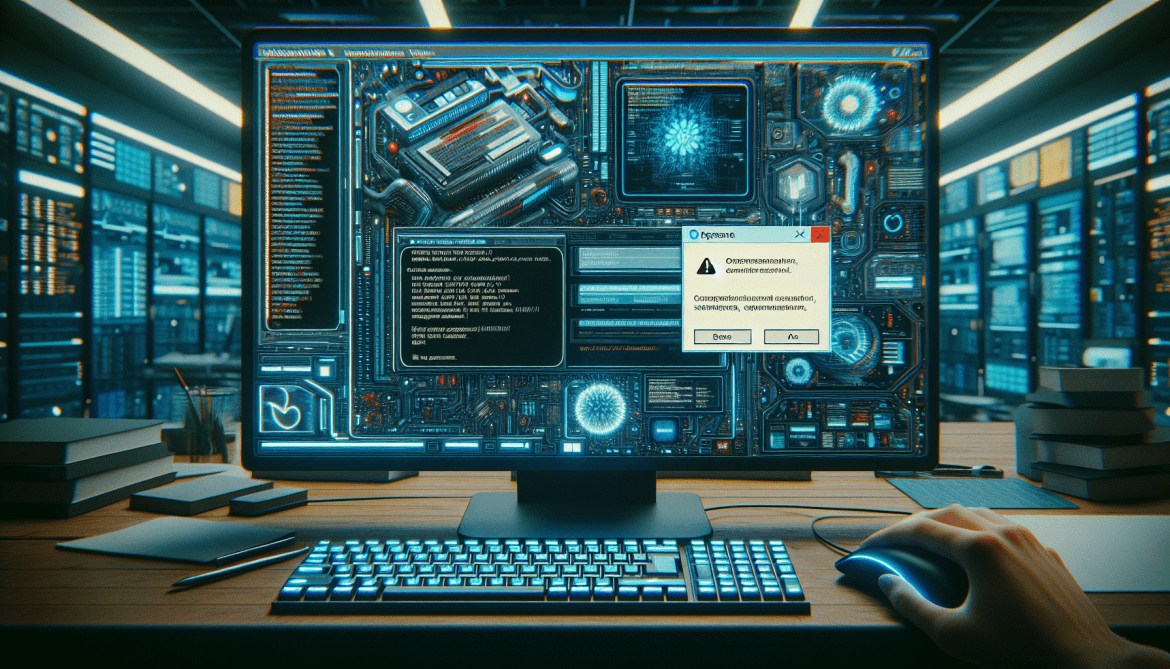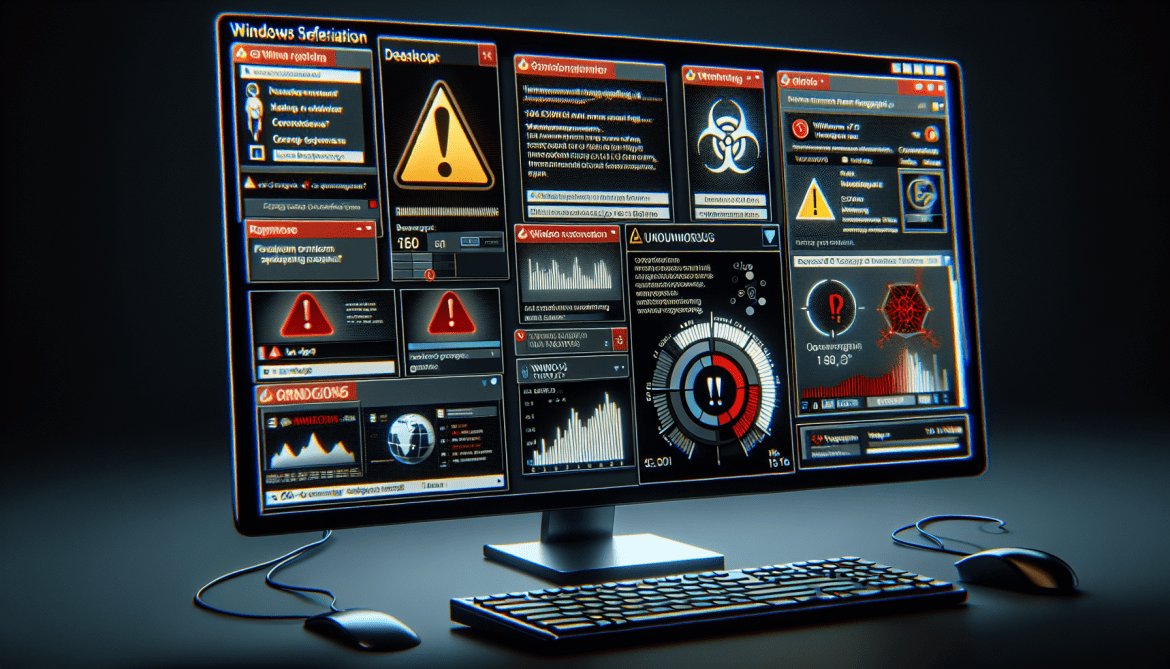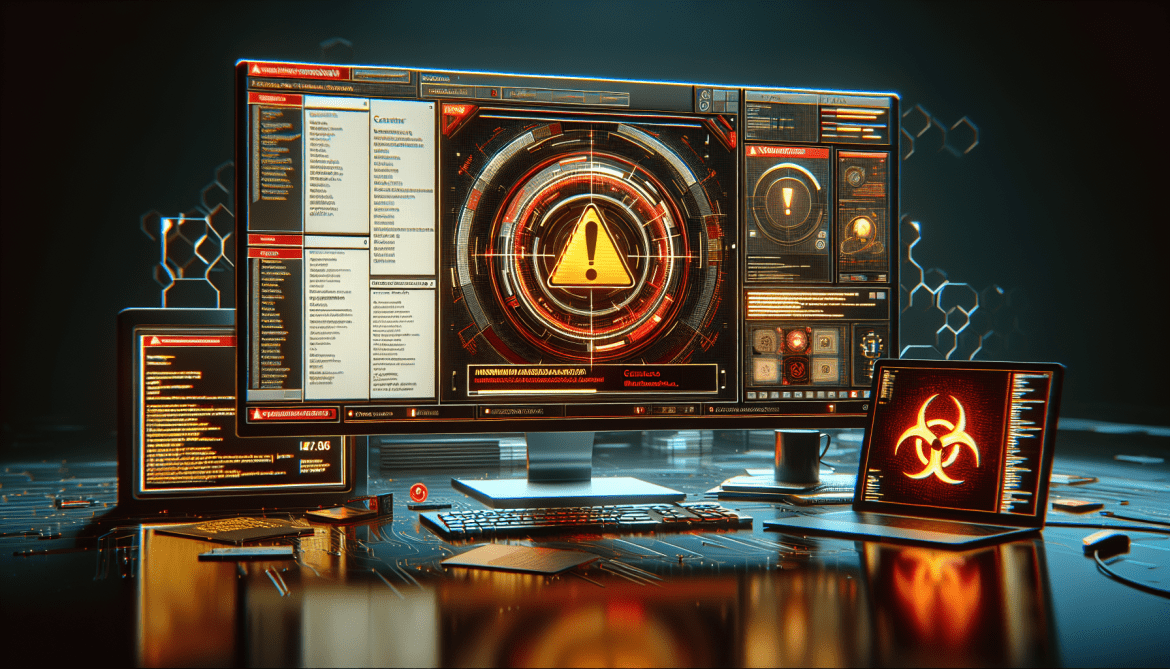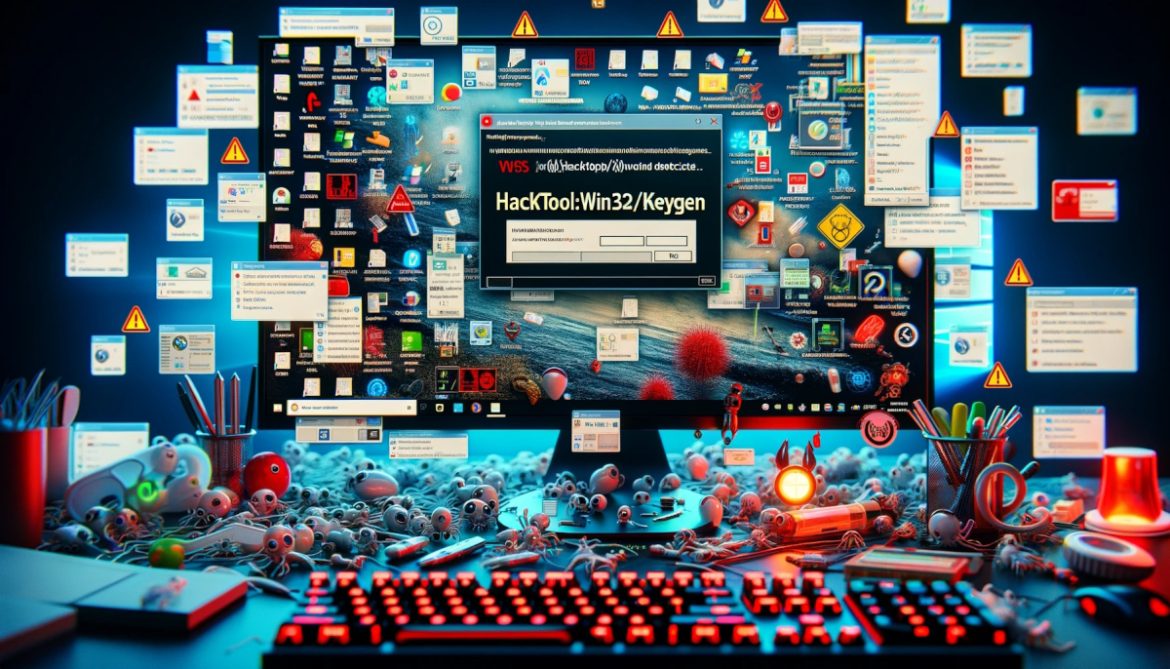Trojan:Win32/Suweezy is a malicious software program identified as a trojan. Trojans are a type of malware that appear to be normal or desirable software, but once installed, they grant a hacker unauthorized access to the infected system. Trojan:Win32/Suweezy typically infects computers by disguising itself as a legitimate program or file that users are tricked into downloading and installing. It can also be delivered via email attachments, malicious websites, or bundled with other software. Once the trojan has been executed on a system, it can perform various harmful activities. These may include stealing sensitive data, installing more malware, modifying system settings, and even using the infected system to launch attacks on other computers. To protect against Trojan:Win32/Suweezy and other malware, it’s important to keep all software up-to-date, use a reliable antivirus solution, and avoid downloading files or clicking on links from unknown sources.
Category: Trojans/Viruses
How to remove Trojan.Win64.Encoder
Trojan.Win64.Encoder is a type of malicious software, specifically a Trojan horse, that primarily targets Windows 64-bit operating systems. Its main purpose is to infiltrate a user’s computer without their knowledge or consent and perform various harmful activities. The Trojan.Win64.Encoder is often camouflaged as a legitimate file or software to deceive users into downloading and installing it. It can also be embedded in email attachments, software updates, or distributed through malicious websites. Once installed, it can gain control over the system by modifying system settings, disabling antivirus software, and opening backdoors for further infections. The Trojan.Win64.Encoder is particularly known for its data encoding or encryption capabilities. After infecting a system, it can encrypt files and data stored on the computer, making them inaccessible to the user. Typically, a ransom message is then displayed, demanding payment from the victim to decrypt and restore access to the files. This kind of malicious activity is commonly referred to as ransomware. As with other types of malware, prevention is the best way to protect against Trojan.Win64.Encoder. This includes maintaining up-to-date antivirus software, being careful when downloading or installing new software, and avoiding suspicious websites and emails.
How to remove Win32/Floxif
Win32/Floxif is a Trojan horse type of malware that specifically targets computers running on the Windows 32-bit operating system. Its main goal is to infiltrate your system and corrupt your files, which can lead to various detrimental effects such as a decrease in system performance, loss of data, or even total system failure. Win32/Floxif infiltrates computers by hiding itself within another program or file. The user unknowingly installs the malicious program thinking they are installing something legitimate. The Trojan can also be introduced into a system through spam emails, fraudulent downloads, or by visiting infected websites. Once inside the system, Win32/Floxif starts to gather and transmit sensitive user data to a remote server controlled by cybercriminals. This data can include passwords, credit card information, and other personal details. It may also download and install additional malware onto the infected computer, further compromising its security. The Trojan can also modify system settings to make itself run automatically each time the computer is turned on, making its removal challenging.
How to remove SugarGh0st
SugarGh0st is a type of malicious software, or malware, that can infect computers. It is typically spread through malicious emails, websites, or infected software downloads. Once inside a computer, SugarGh0st can perform a variety of malicious activities such as stealing personal information, tracking user behavior, or causing system damage.
The infection process usually goes as follows:
1. Delivery: The malware is delivered to the victim’s computer through a malicious email attachment, a compromised website, or a malicious software download. The malware may be disguised as a legitimate file or software to trick the user into downloading or opening it.
2. Execution: Once the file is opened or the software is installed, the malware is executed. It may install itself in the system files or registry to maintain persistence, meaning it will continue to operate even if the computer is restarted.
3. Infection: After execution, SugarGh0st starts its malicious activities. It may start collecting personal information, tracking user activity, or damaging system files. It may also try to spread to other computers on the same network.
4. Command and Control: SugarGh0st may also establish a connection with a remote server controlled by the attacker. This allows the attacker to control the infected computer, send commands to the malware, and receive stolen data.
In order to avoid infection by SugarGh0st and other similar malware, it is important to practice safe internet habits, such as not opening suspicious emails, not visiting untrusted websites, and only downloading software from trusted sources. It’s also crucial to keep all software and operating systems up-to-date and to use a reliable antivirus software.
How to remove Pua:Win32/Solvusoft
Pua:Win32/Solvusoft is a potentially unwanted application (PUA) detected by Windows Defender, a built-in anti-malware component of Microsoft Windows. PUAs are not necessarily harmful, but they can engage in annoying or undesirable behaviors, such as displaying unwanted ads or tracking user habits. Pua:Win32/Solvusoft can infect computers through various ways. Here are some common infection methods:
1. Downloading Software: One of the most common ways a computer may end up with Pua:Win32/Solvusoft is through downloading and installing software. PUAs are often bundled with other software, especially freeware or shareware. During installation, the PUA may be installed alongside the desired program without the user’s knowledge.
2. Clicking on Infected Links: If a user clicks on an infected link, they might unknowingly download Pua:Win32/Solvusoft onto their computer.
3. Opening Email Attachments: Opening email attachments from unknown or suspicious sources can also lead to a PUA infection.
4. Browsing Unsafe Websites: Websites that are not secure or contain malicious content can also lead to a PUA infection.
To avoid Pua:Win32/Solvusoft and other PUAs, it can be helpful to only download software from trusted sources, avoid clicking on unknown links, be cautious of email attachments from unknown sources, and use a reliable security program.
How to remove Pua:Win32/Fusioncore
Pua:Win32/Fusioncore is a potentially unwanted application (PUA) that is categorized as malicious software or malware by Windows Defender and other antivirus software. It’s not as harmful as a virus or ransomware, but it can still pose a threat to your computer’s security and your personal data. Pua:Win32/Fusioncore often comes bundled with free software downloads from the internet. It usually infects computers when users download and install free software without carefully reading the terms and conditions. The PUA is hidden within the software installer and gets installed alongside the desired program without the user’s knowledge. Once installed, Pua:Win32/Fusioncore can cause various problems. It may slow down your computer, display annoying advertisements, or even change your browser settings. It can also potentially collect your personal information and send it to third parties. To avoid getting infected by Pua:Win32/Fusioncore or similar PUAs, it’s crucial to only download software from trusted sources, pay attention during the installation process, and regularly update and run your antivirus software.
How to remove Backdoor:Win32/Cycbot!Pz
Backdoor:Win32/Cycbot!Pz is a malicious software, often referred to as a Trojan or backdoor virus, that infiltrates your computer system without you being aware. It is classified under the family of Win32/Cycbot. The primary goal of this malware is to disrupt the normal functioning of your computer and gather your personal information for malicious purposes.
Backdoor:Win32/Cycbot!Pz is typically delivered through spam emails, malicious or hacked web pages, Internet Relay Chat (IRC), peer-to-peer networks, etc. It may arrive on your computer as a component of other malware or as a file downloaded unknowingly by users when visiting malicious sites.
Once it gets into your system, it creates a backdoor that allows the hacker to gain control of your computer remotely. It can steal personal information, such as passwords, login details, and credit card numbers. It also can download and install additional malicious software, modify system settings, and severely compromise system performance.
Backdoor:Win32/Cycbot!Pz is designed to remain undetected by mimicking legitimate processes or embedding itself deep into your system files. It is crucial to maintain updated antivirus software to detect and remove such threats, and always practice safe browsing habits to prevent such infections.
How to remove Pua:Win32/Presenoker
Pua:Win32/Presenoker is a potentially unwanted application (PUA) that is often identified and flagged by Microsoft Windows Defender and other antivirus software. It’s not a virus in the traditional sense, but it can be harmful or intrusive.
This PUA often comes bundled with other software during installation. It may also be downloaded from untrustworthy websites or through spam emails. Once on the system, it may display unwanted ads, change browser settings, redirect searches to advertising or phishing websites, or slow down the system. It can also potentially collect sensitive personal data.
Users often unknowingly download Pua:Win32/Presenoker when they do not carefully read and opt out of additional “offers” during the software installation process. Therefore, it’s crucial to download software from trustworthy sources and to pay attention during the installation process, unchecking any boxes related to additional downloads or changes to the system.
How to remove Hacktool:Win32/Keygen
Hacktool:Win32/Keygen is a tool that generates keys for various software products. It’s designed to create illicit serial numbers for software applications that would otherwise require a purchase. This tool is often used to bypass software licensing and activation, allowing users to use software without paying for it. However, while it might seem useful for those seeking free access to paid software, it’s important to note that Hacktool:Win32/Keygen is often identified as a risky tool by antivirus programs. This categorization is due to its association with illegal activities and its potential to cause harm to users’ systems.
The way Hacktool:Win32/Keygen infects computers is typically through downloads from unreliable or unsecured sources. Users looking for ways to avoid paying for software might find and download this tool from various websites hosting pirated software. However, these downloads often come with risks. Apart from the legal and ethical implications, such tools are frequently bundled with malware or other malicious software. Once executed on a computer, they can compromise the system’s security. This could lead to a range of issues, from annoying ads to serious threats like data theft or ransomware. It’s important to recognize that the use of such tools not only undermines software developers but also poses significant risks to the user’s computer security.

